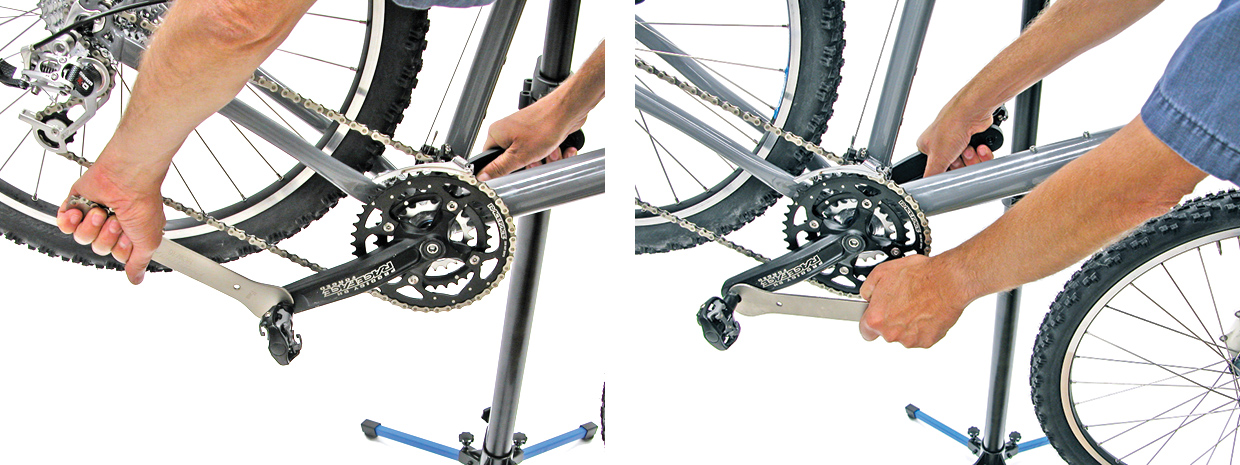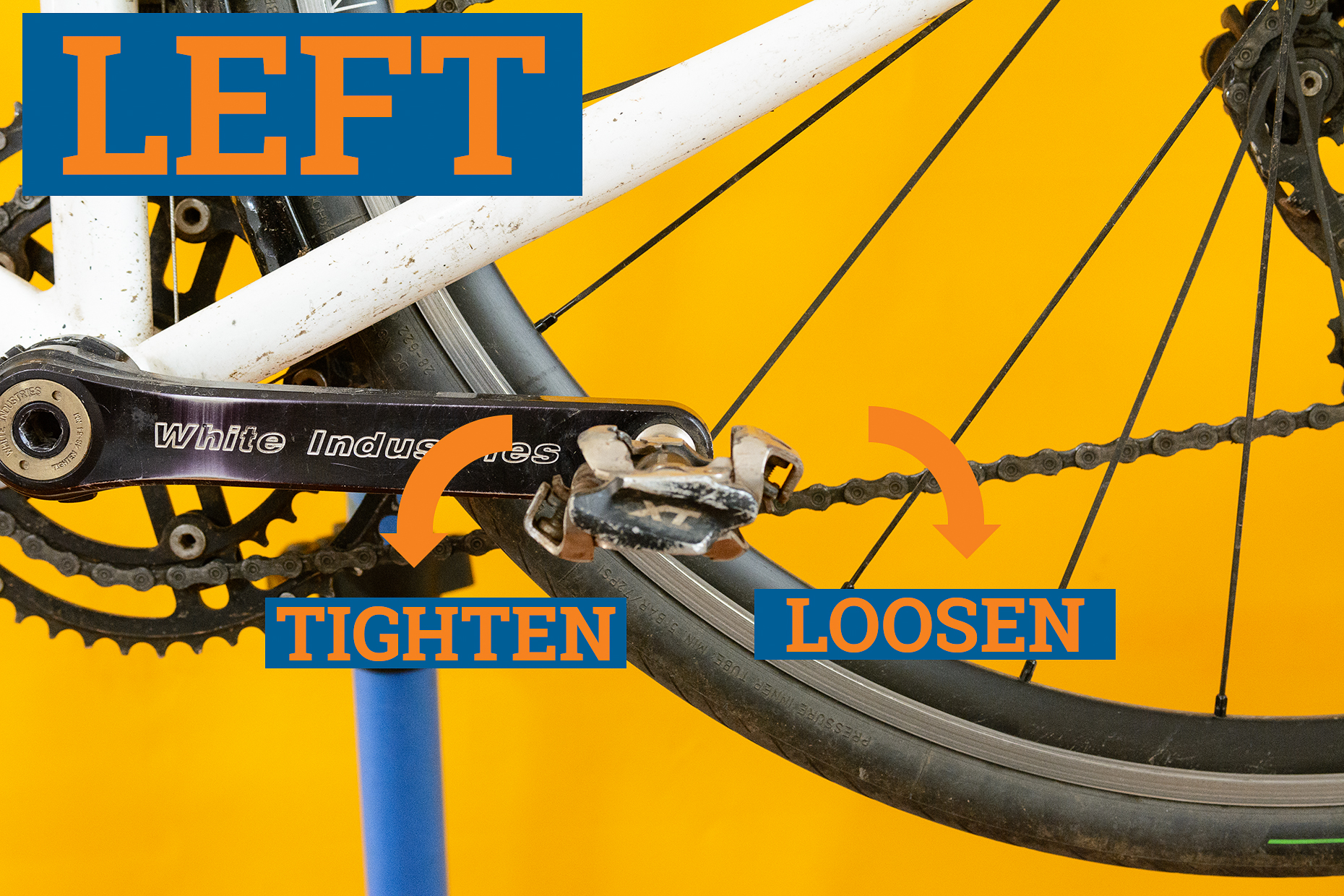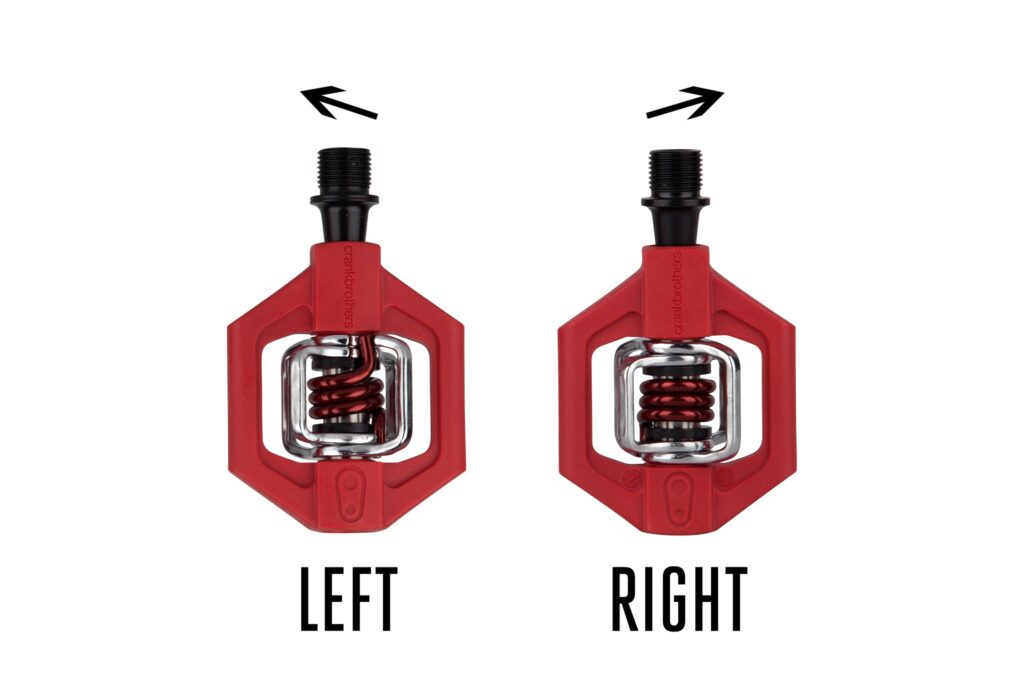Have you ever found yourself struggling to remove your bike pedals, wondering if there’s a secret trick to it? You’re not alone.
Many cyclists encounter the mysterious world of bike pedal threading, leaving them puzzled and frustrated. The question, “Are bike pedals reverse threaded? ” Might have crossed your mind during your attempts. Understanding this can save you time and prevent unnecessary damage to your bike.
We’ll unlock the secrets behind bike pedal threading, giving you the knowledge you need to easily tackle this common cycling challenge. Get ready to clear up the confusion and make your bike maintenance a breeze!
The Mechanics of Bike Pedals
Bike pedals are essential components that connect the rider to the bike. Understanding their mechanics is crucial for maintenance and performance. Pedals may seem simple, but they are designed with precision. One common question is whether bike pedals are reverse threaded.
The Basics Of Bike Pedal Mechanics
Bike pedals have threads to attach them to the crank arms. These threads are designed to ensure pedals stay secure while riding. This threading is critical for safety and efficiency.
Why Reverse Threading Exists
Reverse threading is used to prevent pedals from unscrewing while cycling. The left pedal has a reverse thread, while the right pedal has a regular thread. This setup counters the rotational forces that could loosen pedals.
Understanding Left And Right Pedal Threads
The right pedal tightens clockwise, following standard threading. The left pedal tightens counterclockwise, utilizing reverse threading. This distinction is important for installation and removal.
Installing Bike Pedals Correctly
Correct installation involves aligning threads properly. The right pedal screws into the crank arm clockwise. The left pedal screws in counterclockwise. Proper alignment prevents damage to threads.
Importance Of Regular Maintenance
Regular pedal maintenance ensures longevity and performance. Check threads for wear and tear. Ensure pedals are securely fastened. Regular inspection can prevent unexpected issues during rides.

Credit: www.parktool.com
Why Some Pedals Are Reverse Threaded
Biking is a fun and rewarding activity. Yet, many wonder about the mysteries of bike mechanics. One such puzzle is why some bike pedals are reverse threaded. This detail often puzzles new cyclists. Understanding this can improve your biking experience. Let’s dive into the reasons behind this design choice.
Why Reverse Threading Exists
Pedals attach to cranks with threads. These can loosen with regular use. Reverse threading helps prevent this. It ensures pedals stay secure during rides. Right-side pedals are clockwise threaded. Left-side pedals are counter-clockwise threaded. This design counters natural rotation forces. It keeps the pedals tight as you pedal.
The Science Behind Pedal Movement
Pedaling creates rotational force. This force can loosen standard threads. Reverse threading fights this effect. It uses rotational direction to keep pedals tight. It’s a clever solution to a common problem. Engineers designed this for safety and efficiency.
Benefits Of Reverse Threaded Pedals
Reverse threading improves bike safety. It reduces the chance of pedals falling off. This design offers peace of mind on long rides. Cyclists can focus on the road, not their pedals. It also extends the lifespan of pedal components. Less loosening means less wear and tear.
A Simple Yet Effective Solution
Reverse threading might seem complex. Yet, it’s a simple solution to a big issue. It solves a problem without extra parts or tools. This design choice shows clever engineering. It’s a small tweak with a big impact on biking safety.
Tips For Proper Pedal Installation
Bike pedals have a unique threading. The right pedal is standard, turning clockwise to tighten. The left pedal is reverse threaded, meaning it tightens counterclockwise. Proper installation ensures safety and smooth cycling.
Installing bike pedals might seem straightforward, but there are some important details that can make your ride smoother and safer. Many cyclists, especially beginners, wonder about the threading of bike pedals and how to install them correctly. Knowing a few key tips can help you avoid common mistakes and ensure your pedals are secure.
It’s all about getting the details right. Missteps in installation can lead to problems on the road. Let’s dive into some practical tips that will make the process easier for you.
###
Understand Pedal Thread Direction
Bike pedals are unique because they have specific thread directions. The right pedal has a standard thread (righty-tighty), while the left pedal is reverse threaded. This design prevents the pedals from loosening while you ride. Remembering this can save you time and frustration.
###
Identify Left And Right Pedals
Before you start, check the pedals for markings like “L” or “R”. These indicators show which pedal goes on which side of the bike. Installing them on the wrong side can damage the threads. I’ve made this mistake before and had to replace a crank arm—it’s a lesson you only need to learn once.
###
Use The Right Tools
A pedal wrench or a hex key is essential for this task. These tools fit perfectly and provide the leverage needed for proper installation. Using the wrong tool can strip the threads and make future maintenance difficult. Keep these tools handy in your bike toolkit for ease.
###
Apply Grease To Threads
Grease is your friend when installing pedals. It reduces friction and prevents the threads from seizing over time. A small dab of grease on the threads before installation can make removal easier later on. This simple step can save you a lot of effort and frustration down the line.
###
Ensure Proper Tightness
Over-tightening can damage your bike, while under-tightening can lead to a pedal falling off mid-ride. Aim for a firm hand-tightness. If you’re uncertain, a torque wrench can provide the precision needed to avoid common tightening mistakes. It’s about finding that just-right balance.
###
Check Your Work
Once installed, give each pedal a quick spin. They should move smoothly without resistance. This check ensures that everything is in place and ready for your next ride. An uneven spin might indicate a cross-threaded pedal, which needs to be fixed before hitting the road.
Have you ever tried installing pedals and faced unexpected issues? Share your experience in the comments. Your tips might help others avoid similar pitfalls.

Credit: www.bikeradar.com

Credit: www.youtube.com
Frequently Asked Questions
Are All Bike Pedals Reverse Threaded?
Not all bike pedals are reverse threaded. The right pedal has standard threading, while the left pedal is reverse threaded. This design prevents loosening while cycling. Always check the threading direction before installing or removing pedals to avoid damage.
Which Way Do Bike Pedals Unscrew?
Bike pedals unscrew in opposite directions. The right pedal loosens counterclockwise, while the left pedal loosens clockwise. Use a wrench for leverage, ensuring the correct direction for each side. This prevents damage and ensures safe maintenance. Always check pedal markings for the correct installation direction.
What Direction Do Bike Pedals Thread?
Right pedals thread clockwise, while left pedals thread counterclockwise. This design prevents pedals from loosening during cycling. Always check pedal markings for “L” and “R” to ensure correct installation.
Conclusion
Understanding bike pedals is essential for smooth rides. Many pedals feature reverse threading. This design prevents loosening during cycling. Keep this in mind when adjusting or replacing them. Proper installation ensures safety and performance. Remember, left pedals unscrew clockwise. Right pedals unscrew counterclockwise.
This simple detail is crucial. Always check threading direction before working on pedals. It saves time and frustration. Easy enough for beginners. With this knowledge, bike maintenance becomes simpler. Enjoy your rides without worry. Safe cycling, every time!



